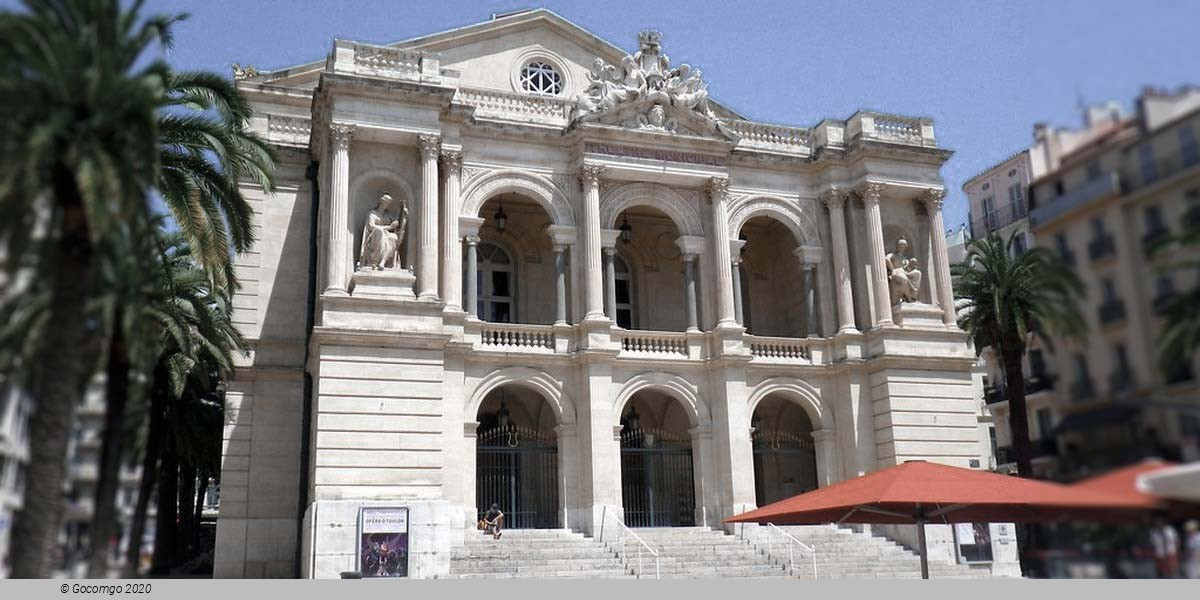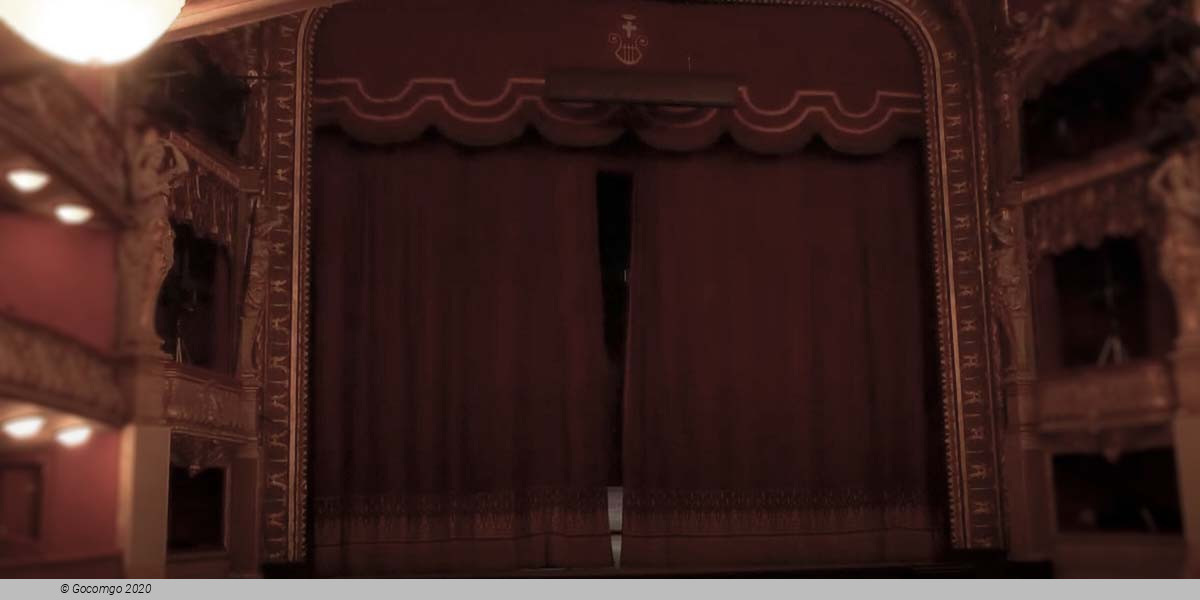Venues in Toulon

Toulon is a city on the French Riviera and a large port on the Mediterranean coast, with a major naval base. Located in the Provence-Alpes-Côte d'Azur region, Toulon is the capital of the Var department.
History
Prehistory to the Roman era
Archaeological excavations, such as those at the Cosquer Cave near Marseille, show that the coast of Provence was inhabited since at least the Paleolithic era. Greek colonists came from Phocaea, Asia Minor, in about the 7th century BC and established trading depots along the coast, including one, called Olbia, at Saint-Pierre de l'Almanarre south of Hyères, to the east of Toulon. The Ligurians settled in the area beginning in the 4th century BC.
In the 2nd century BC, the residents of Massalia (present-day Marseille) called upon the Romans to help them pacify the region. The Romans defeated the Ligurians and began to start their own colonies along the coast. A Roman settlement was founded at the present location of Toulon, with the name Telo Martius – Telo, either for the goddess of springs or from the Latin tol, the base of the hill – and Martius, for the god of war. Telo Martius became one of the two principal Roman dye manufacturing centres, producing the purple colour used in imperial robes, made from the local sea snail called murex, and from the acorns of the oak trees. Toulon harbour became a shelter for trading ships, and the name of the town gradually changed from Telo to Tholon, Tolon, and Toulon.
Arrival of Christianity and the Counts of Provence
A Saint Cyprian, disciple and biographer of St. Cæsarius of Arles, is also mentioned as a Bishop of Toulon. His episcopate, begun in 524, had not come to an end in 541; he converted to Catholicism two Visigothic chiefs, Mandrier and Flavian, who became anchorites and martyrs on the peninsula of Mandrier. As barbarians invaded the region and Roman power crumbled, the town was frequently attacked by pirates and the Saracens. In 1095, a new cathedral was built in the city by Count Gilbert of Provence.Toulon was Christianized in the 5th century, and the first cathedral built. Honoratus and Gratianus of Toulon (Gratien), according to the Gallia Christiana, were the first bishops of Toulon, but Louis Duchesne gives Augustalis as the first historical bishop. He assisted at councils in 441 and 442 and signed in 449 and 450 the letters addressed to Pope Leo I from the province of Arles.
Royal port (15th–18th centuries)
In 1486 Provence became part of France. Soon afterwards, in 1494, Charles VIII of France, with the intention of making France a sea power on the Mediterranean, and to support his military campaign in Italy, began constructing a military port at the harbor of Toulon. His Italian campaign failed, and in 1497, the rulers of Genoa, who controlled commerce on that part of the Mediterranean, blockaded the new port.
In 1524, as part of his longtime battle against Emperor Charles V and the Holy Roman Empire, King François I of France completed a powerful new fort, the Tour Royale, Toulon, at the entrance of the harbour. However, a few months later the commander of the new fort sold it to the commander of an Army of the Holy Roman Empire, and Toulon surrendered.
In 1543, Francis I found a surprising new ally in his battle against the Holy Roman Empire. He invited the fleet of Ottoman Admiral Barbarossa to Toulon as part of the Franco-Ottoman alliance. The residents were forced to leave, and the Ottoman sailors occupied the town for the winter. See Ottoman occupation of Toulon.
In 1646, a fleet was gathered in Toulon for the major Battle of Orbetello, also known as the Battle of Isola del Giglio, commanded by France's first Grand Admiral, the young Grand Admiral Marquis of Brézé, Jean Armand de Maillé-Bréze of 36 galleons, 20 galleys, and a large complement of minor vessels. This fleet carried aboard an army of 8,000 infantry and 800 cavalry and its baggage under Thomas of Savoy, shortly before a general in Spanish service.
King Louis XIV was determined to make France a major sea power. In 1660, his Minister Jean-Baptiste Colbert ordered Sébastien Le Prestre de Vauban to build a new arsenal and to fortify the town. In 1707, during the War of the Spanish Succession, Toulon successfully resisted a siege by the Imperial Army led by Duke Victor Amadeus II of Sardinia of Savoy and Prince Eugene. However, in 1720, the city was ravaged by the black plague, coming from Marseille. Thirteen thousand people, or half the population, died.
In 1790, following the French Revolution, Toulon became the administrative centre of the département of the Var. However, in 1793, the Jacobin administration of the city was swept from power, allowing Girondins and royalists to take their place; the city then rose up against the central administration of the First Republic and joined the Federalist revolts. The new Federalist administration surrendered the city and its fleet to the British. French Republican forces then undertook the siege of Toulon, forcing the British to withdraw, taking a number of ships with them and destroying the rest of them. Napoleon Bonaparte served as an artillery captain during the event. To punish Toulon for its rebellion, the town lost its status as department capital and was briefly renamed Port-de-la-Montagne.
19th century
During the Napoleonic Wars, from 1803 until 1805 a British fleet led by Admiral Horatio Nelson blockaded Toulon.
In 1820, the statue which became known as the Venus de Milo was discovered on the Greek island of Milo and seen by a French naval officer, Emile Voutier. He persuaded the French Ambassador to Turkey to buy it, and brought it to Toulon on his ship, the Estafette. From Toulon it was taken to the Louvre.
In 1820 Toulon became the base for the conquest of France's colonies in North Africa. In 1820 a French fleet with an army departed from Toulon for the conquest of Algeria.
1849, during the brief Second French Republic, Georges-Eugène Haussmann was named Prefect of the Var. During his year as prefect, he began a major reconstruction of the city, similar to what he would later do in Paris. He tore down large parts of the old fortifications and built new boulevards and squares. The new Toulon Opera House, the second-largest in France, opened in 1862.
In 1867, on the orders of Napoleon III General François Achille Bazaine arrived in Toulon without an official welcome after abandoning the Mexican military campaign and Emperor Maximilian I of Mexico.
20th century
In August 1935, a year before the reign of the Popular Front, violent uprisings of the workers of the Toulon shipyards opposed the policy of austerity. This resulted in a large number of deaths and injuries; a state of emergency was imposed.
During World War II, after the Allied landings in North Africa (Operation Torch) the German Army occupied southern France (Case Anton), leading French naval officers to scuttle the French Fleet based at Toulon on 27 November 1942. The city was bombed by the Allies in November of the following year, with much of the port destroyed and five hundred residents killed. Toulon was liberated by the Free French Forces of General Jean de Lattre de Tassigny on 28 August 1944 in the Battle of Toulon.
In 1974 Toulon became again the préfecture, or administrative centre, of the Var. Five years later the University of Toulon opened. Toulon was one of four French cities where the extreme-right Front National won the local elections in 1995. The Front National was voted out of power in 2001.


